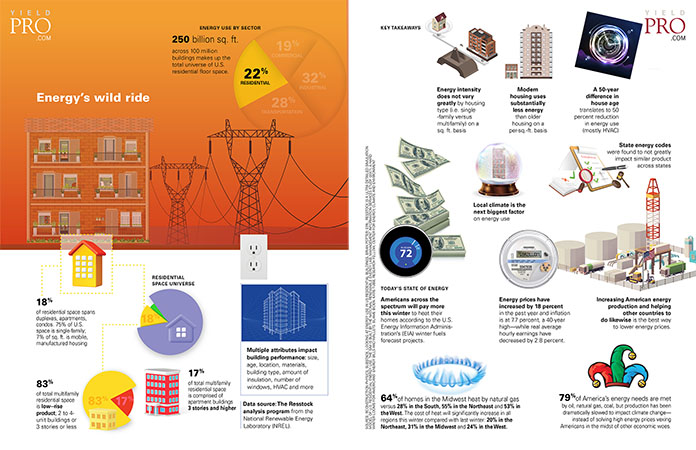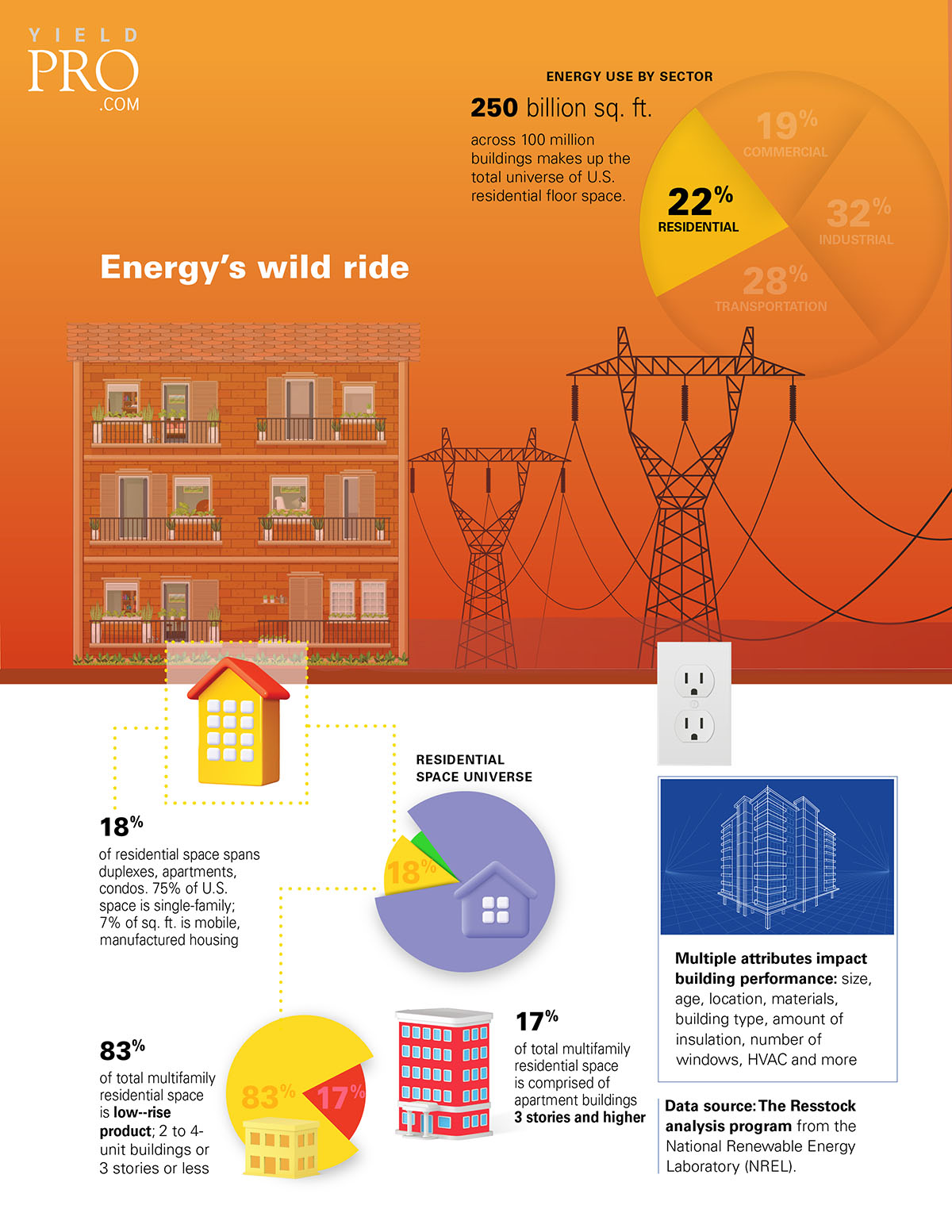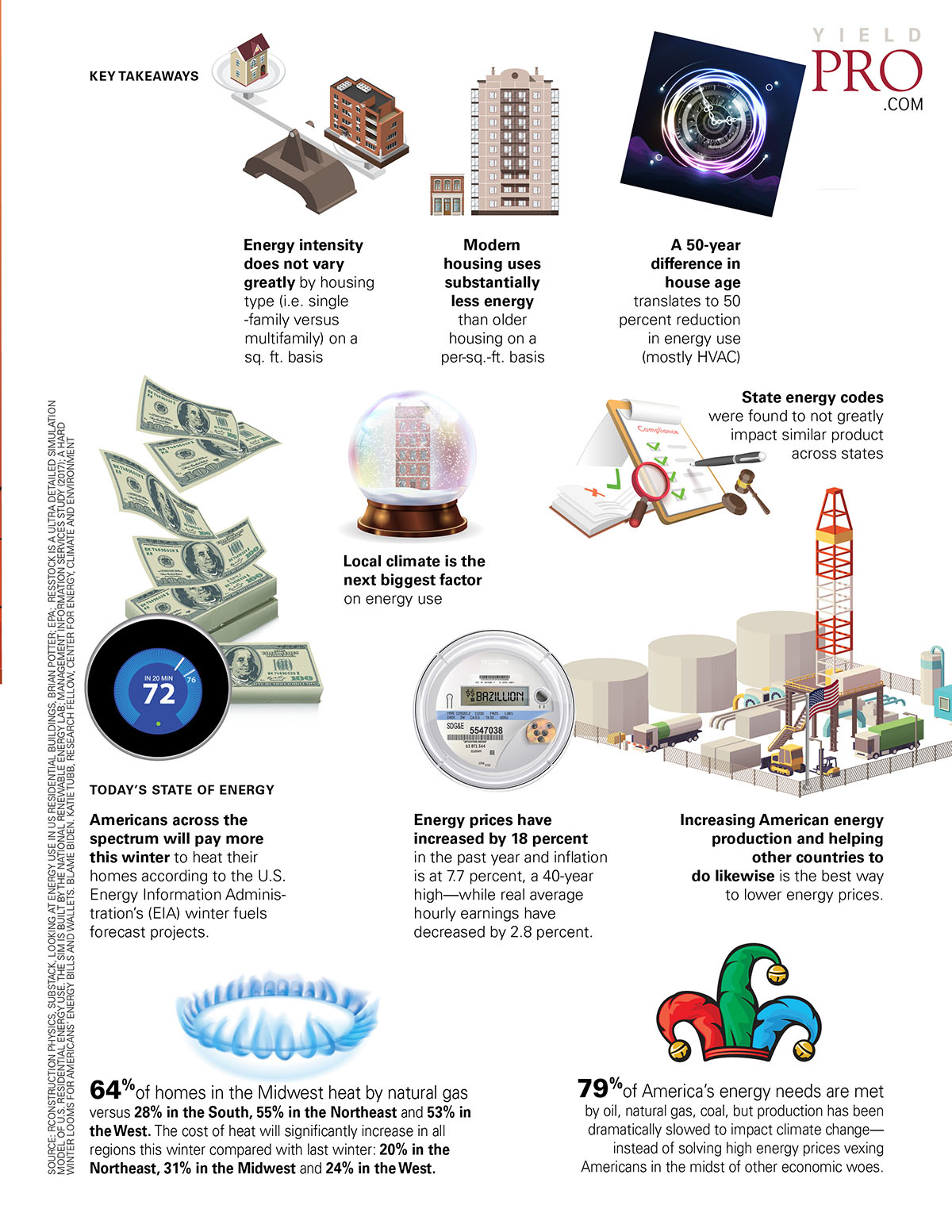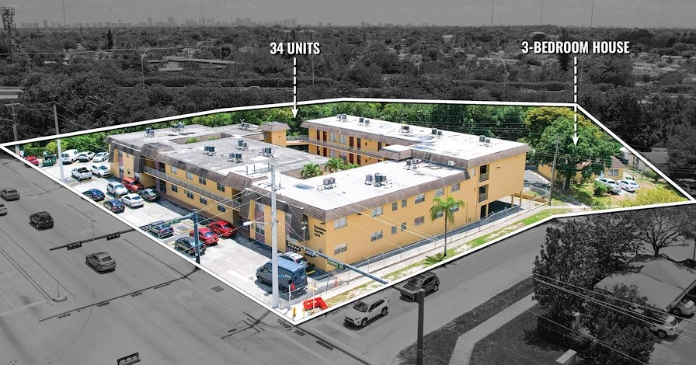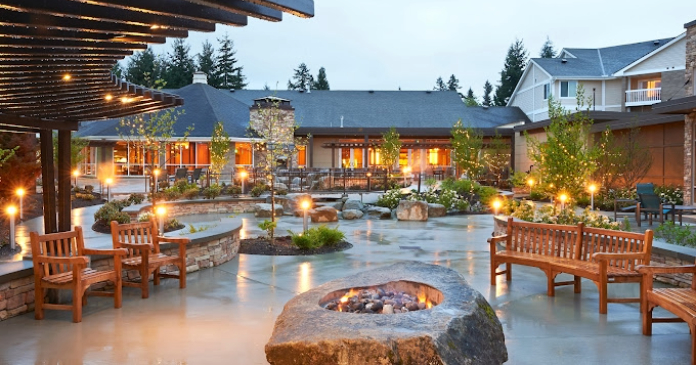250 billion sq. ft. across 100 million buildings makes up the total universe of U.S. residential floor space.
RESIDENTIAL SPACE UNIVERSE
- 18 percent of residential space spans duplexes, apartments, condos. 75 percent of U.S. space is single-family; 7 percent of sq. ft. is mobile, manufactured housing
- 83 percent of total multifamily residential space is low–rise product; 2 to 4-unit buildings or 3 stories or less
- 17 percent of total multifamily residential space is comprised of apartment buildings 3 stories and higher
Multiple attributes impact building performance: size, age, location, materials, building type, amount of insulation, number of windows, HVAC and more
Data source: The Resstock analysis program from the National Renewable Energy Laboratory (NREL).
KEY TAKEAWAYS
Energy intensity does not vary greatly by housing type (i.e. single-family versus multifamily) on a sq. ft. basis
Modern housing uses substantially less energy than older housing on a per-sq.-ft. basis
A 50-year difference in house age translates to 50 percent reduction in energy use (mostly HVAC)
Local climate is the next biggest factor on energy use
State energy codes were found to not greatly impact similar product across states
TODAY’S STATE OF ENERGY
Americans across the spectrum will pay more this winter to heat their homes according to the U.S. Energy Information Administration’s (EIA) winter fuels forecast projects.
Energy prices have increased by 18 percent in the past year and inflation is at 7.7 percent, a 40-year high—while real average hourly earnings have decreased by 2.8 percent.
Increasing American energy production and helping other countries to do likewise is the best way to lower energy prices.
64 percent of homes in the Midwest heat by natural gas versus 28 percent in the South, 55 percent in the Northeast and 53 percent in the West. The cost of heat will significantly increase in all regions this winter compared with last winter: 20 percent in the Northeast, 31 percent in the Midwest and 24 percent in the West.
79 percent of America’s energy needs are met by oil, natural gas, coal, but production has been dramatically slowed to impact climate change—instead of solving high energy prices vexing Americans in the midst of other economic woes.


